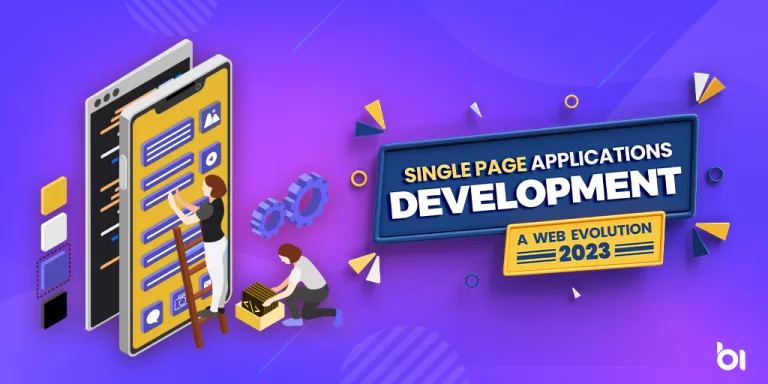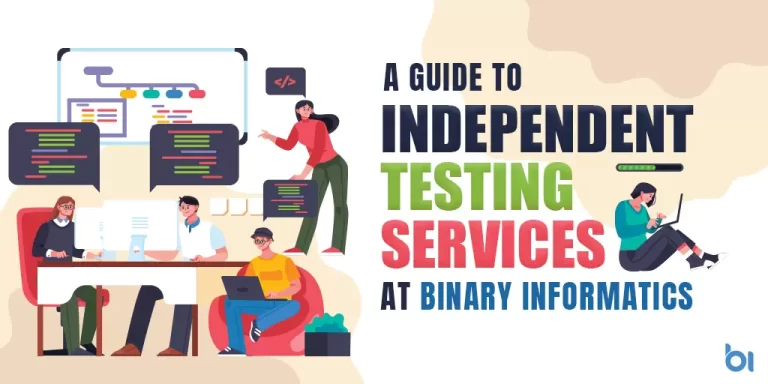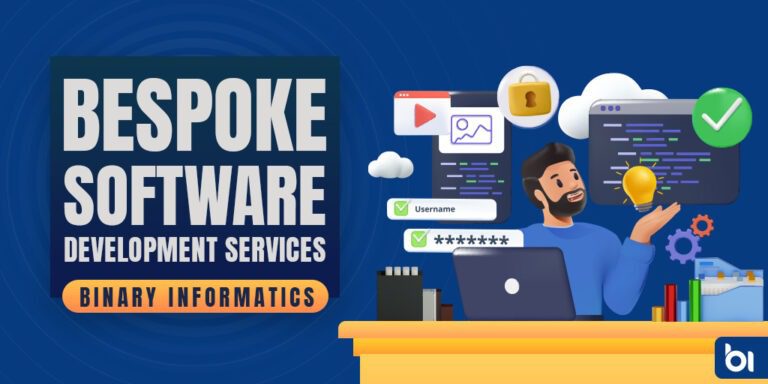Single page applications development (SPAs) have gained popularity in years due to their numerous advantages over traditional multi page applications (MPAs). SPAs are known for their enhanced responsiveness, faster loading times and improved user friendliness making them an excellent choice for an array of web-based applications.
In this article we will delve into the future of page application development. Explore the key trends and technologies that are shaping this exciting field.
Table of Contents
ToggleWhat are Single Page Applications (SPAs)?
Single Page Applications (SPAs) refer to a type of web application that loads a HTML page and dynamically updates its content as users interact with the app. This innovative approach leverages AJAX technology allowing content to be displayed without requiring a page
The increasing popularity of SPAs stems from their ability to offer advantages compared to web applications. These benefits include;
- Improved user experience: SPAs provide an responsive user experience by enabling navigation between different pages and views, without any frustrating loading delays.
- Increased performance: SPAs can outperform web applications as they only need to load a page initially and subsequently update the content dynamically.
- Reduced bandwidth usage: SPAs can help minimize the amount of bandwidth used since they only require data transfer, between the client and server when there are changes in content.
Benefits of Single Page Applications Development
SPAs offer a number of benefits to both users and developers.
For users:
- Improved user experience: SPAs deliver a more responsive user experience allowing them to navigate seamlessly between pages and views without the hassle of page reloading. This creates an app feel making it more engaging and enjoyable for users.
- Increased performance: SPAs tend to be compared to traditional web applications since they only require loading a single page initially and then dynamically updating the content. This is particularly advantageous for users using devices or those with internet connections.
- Reduced bandwidth usage: SPAs minimize bandwidth usage by transferring data between the client and server solely when there are content changes. This aspect is especially valuable for users on data plans or, with bandwidth.
For developers:
- Increased productivity: In terms of development SPAs offer increased productivity compared to web applications. Developers need only focus on building a page and utilize JavaScript to update the content. Consequently, this reduces the amount of code that needs to be written and maintained.
- Improved testability: Single page applications (SPAs) offer testability compared to web applications. With pages and components to test developers can focus on ensuring quality code and reducing the likelihood of bugs.
- Better scalability: SPAs have scalability, than traditional web applications because they can be effortlessly distributed across multiple servers. This makes them particularly well suited for handling high traffic scenarios.
Challenges of Single Page Applications Development
Despite their benefits SPAs also present some challenges. Here are some key challenges faced in SPA development;
- Complexity: Building and maintaining SPAs can be more intricate compared to Page Applications (MPAs). This is due to the need for managing the application state and tracking all changes made.
- SEO: Optimizing SPAs for search engines can be more challenging compared to MPAs. Since SPAs often rely on JavaScript to dynamically update content it can hinder search engine crawling and indexing of the application.
- Back button: Handling browser back button functionality can be problematic for SPAs. This is because SPAs usually load a single HTML page, which may result in navigation when the back button is used.
Solutions to the Challenges of SPA Development
There are a number of solutions to the challenges of SPA development. Some of these solutions include:
- Use a SPA framework or library: Using frameworks and libraries designed specifically for developing SPAs can simplify and expedite the development process. These tools offer features, like routing, state management and SEO optimization that help reduce complexity while building SPAs.
- Use a server-side rendering (SSR) framework: Consider utilizing a framework, for server-side rendering (SSR) which can enhance the search engine optimization (SEO) of single page applications (SPAs). By rendering the state of the application, on the server SSR frameworks allow search engines to effectively crawl and index the application.
- Use a progressive enhancement approach: A progressive enhancement approach can help to improve the back button support of SPAs. This approach involves developing the app to work without JavaScript, and then using JavaScript to enhance the user experience.
Best Practices for Single Page Application Development
There are a number of best practices that can be followed when developing SPAs.
- Use a JavaScript framework: Incorporating a JavaScript framework can offer advantages for SPA development including built components routing capabilities and templating features.
- Use a build tool: Automating tasks like bundling, minifying and transpiling JavaScript code using a build tool can enhance the performance and security of your SPA.
- Use a state management library: Utilizing a state management library helps ensure consistent and efficient management of your SPAs state.
- Optimize for SEO: To improve search engine optimization (SEO) for your SPA consider techniques like pre rendering server side rendering and progressive enhancement.
- Make your SPA accessible: Make your SPA accessible to users with disabilities by incorporating features, like ARIA roles and attributes keyboard navigation support and providing alt text for images.
Future of Single Page Application Development
The future of developing page applications (SPAs) is looking very promising. SPAs are gaining popularity. There are several emerging technologies and trends that will enhance their power and user friendliness.
Some of the key trends that are shaping the future of SPA development include:
- Rise of React Native: React Native is a used framework, for building native mobile applications using React. With React Native developers can create apps using the JavaScript code they use for SPAs. This. Speeds up the mobile app development process while enhancing the user experience.
- Growing popularity of progressive web apps (PWAs): PWAs utilize web technologies to provide users with an experience similar to native apps. They can be installed on devices. Even used offline. PWAs are gaining traction. Are expected to play a crucial role in the future of SPA development.
- Increased adoption of cloud computing: Cloud computing has made SPA development more accessible and cost effective. It enables deployment and development processes for SPAs facilitating their growth. Overall, these trends indicate a future, for single page application development with advancements that will make them even more efficient and user friendly. Cloud services, like Amazon Web Services (AWS) and Google Cloud Platform (GCP) provide an array of offerings to help create and launch Single Page Applications (SPAs).
Conclusion
The future of single page application development looks promising. Single page applications (SPAs) are gaining popularity rapidly. There are emerging technologies and trends that will enhance the power and user friendliness of SPAs. By tackling the hurdles, in SPA development and embracing the trends and technologies developers can create SPAs that offer speed, responsiveness and search engine optimization (SEO) compatibility.




